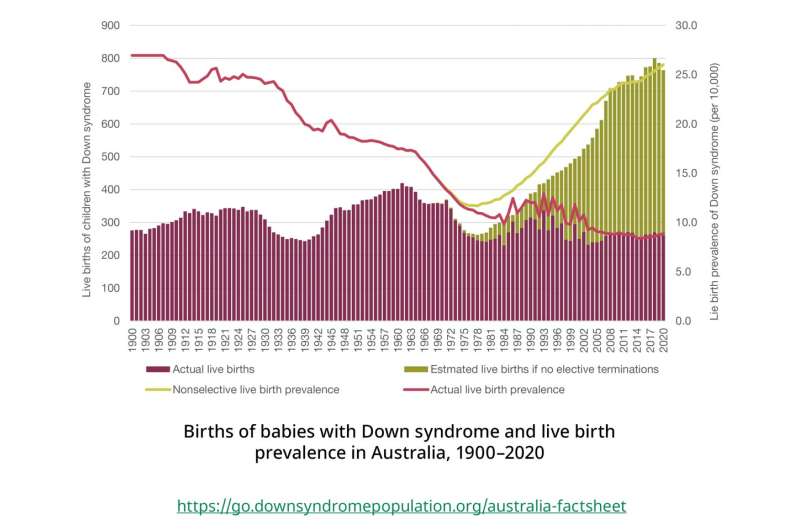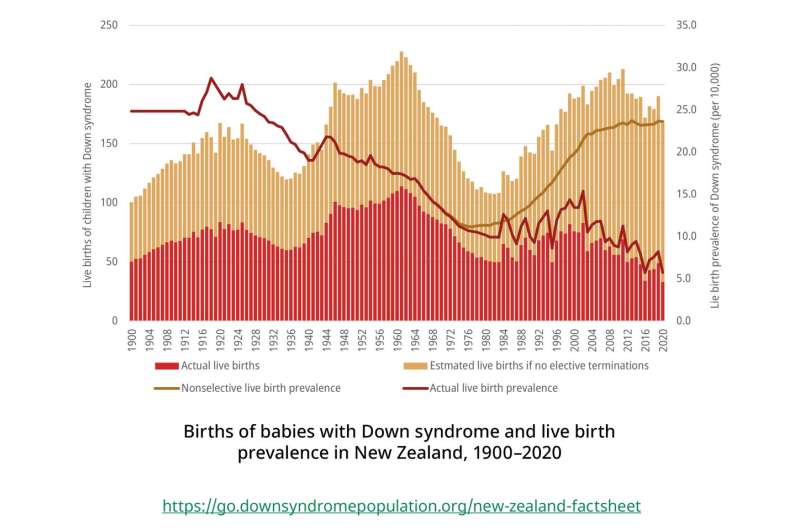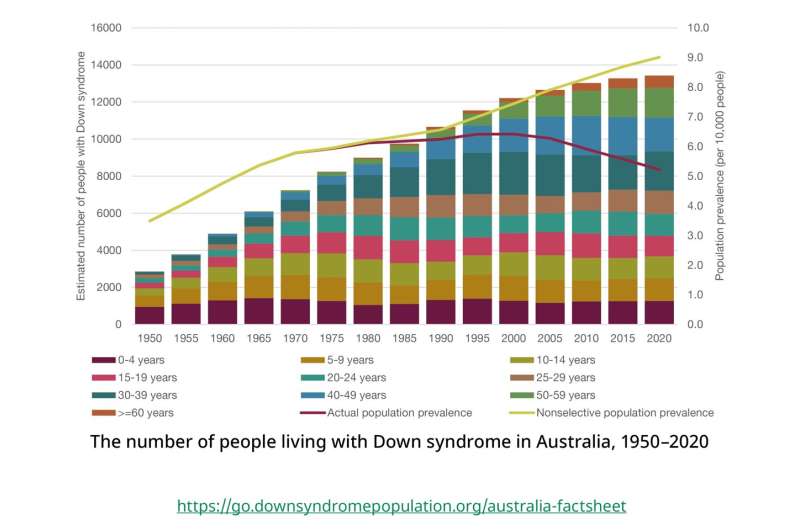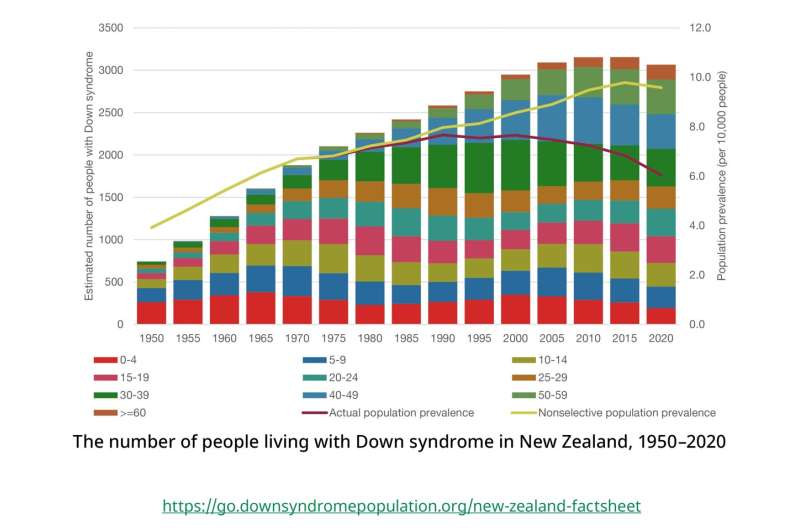Credit: Massachusetts General Hospital
Researchers from Mass General for Children and colleagues have learned more about the effect of selective terminations on birth prevalence and population prevalence of people with Down syndrome in Australia and New Zealand.
In a recent study in Genetics in Medicine, the team estimated the number of live births (LBs) of individuals with Down syndrome that would have occurred in both countries with and without selective termination.
The researchers first had to collect data to determine the actual number of live births with Down Syndrome for both countries. Between 2016 and 2020, there were 265 births of children with Down syndrome in Australia, corresponding to a rate of 8.6 per 10,000 births or one in 1,158 births (see the fact sheet).
In New Zealand, the team estimated 41 annual live births with Down syndrome for a prevalence of 6.9 per 10,000 LBs or one in 1,450 births between 2016 and 2020 (see the fact sheet).
Absent Down syndrome-specific elective terminations, the birth rates of Down syndrome would have been significantly higher in both countries. In Australia, the estimated birth rate would have been 25.4 per 10,000; and in New Zealand 23.4 per 10,000.
The researchers concluded that selective Down syndrome-related terminations have decreased the number of births with Down syndrome in Australia by 66% and 71% in New Zealand.
Credit: Massachusetts General Hospital
These findings illustrate the importance of access to balanced information for families undergoing prenatal screening.
"Information shared with families in the context of prenatal screening decision-making rarely reflects the experiences of those living with Down syndrome and their families," says Ellen Skladzien, CEO of Down Syndrome Australia.
"Health professionals need to provide accurate, balanced information to prospective parents. They also need to allow sufficient time for decision making. Information delivered by health professionals must demonstrate both respect for diversity and for a family's right to informed choice, whatever that choice might be."
The researchers also collected data on the overall population and age distribution of individuals with Down syndrome currently living in both countries.
As of 2020, they estimated that there are approximately 13,420 people with Down syndrome in Australia and 3,065 people with Down syndrome living in New Zealand.
Credit: Massachusetts General Hospital
Without selective termination, the population of individuals with Down syndrome would be approximately 23,150 in Australia (an increase of roughly 10,000) and 4,860 in New Zealand (1,800 more).
This study is the third major paper by this team of researchers. In their first study, the team stitched together multiple databases to estimate the number of live births, miscarriages, and terminations related to Down syndrome in the U.S. from 1900 until 2016 (see the fact sheet). In their second paper, they calculated the same numbers for all European countries over the same time period (see the fact sheet).
Taken together with this newest publication, these researchers have provided the most comprehensive accounting of the Down syndrome population around the globe.
"Around the world prenatal testing for Down syndrome is becoming widely available and more affordable for expectant couples," says Dr. Brian Skotko, Emma Campbell Endowed Chair on Down syndrome and senior author on this new study. "My colleagues and I have calculated these estimates on pregnancy outcomes so that societal dialogue can be centered around accurate data."
By establishing baseline data for Down syndrome LB prevalence and population prevalence of individuals with Down snydrome by age group, the researchers aim to clarify the effect of prenatal screening to better interpret future trends in Down syndrome.
Credit: Massachusetts General Hospital
Down Syndrome Queensland has recently undertaken work with Queensland Health to educate health professionals on providing more balanced information to expectant parents when they have had a diagnosis of Down syndrome.
"Prospective parents have the right to be offered and to access appropriate care pathways at key decision points, including the choice to undertake prenatal testing, receive genetic counseling and the option to connect with condition-specific support groups," says Darryl Steff, CEO of Down Syndrome Queensland.
More information: Gert de Graaf et al, Estimation of the number of people with Down syndrome in Australia and New Zealand, Genetics in Medicine (2022). DOI: 10.1016/j.gim.2022.08.029
Journal information: Genetics in Medicine
Provided by Massachusetts General Hospital

























